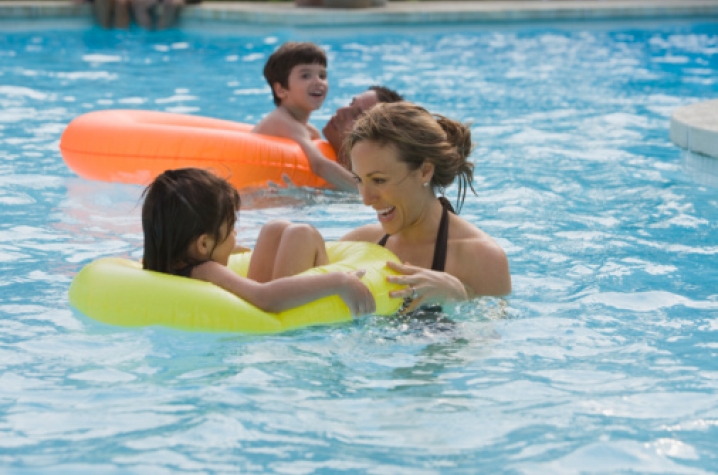Parents Need To Be Vigilant to Avoid Child Drownings

LEXINGTON, Ky. (Aug. 4, 2011) — The following column appeared in the Lexington Herald-Leader on Sunday, July 31.
Parents need to be vigilant to avoid child-drowning deaths
By Sherri Hannan, R.N.
Drowning is the second leading cause of unintentional death for children ages 1 to 14. In the summer, drowning deaths increase nearly 90 percent. Children can get into trouble in a matter of seconds when around water, so it is important to stress the need for active supervision.
Kids drown quickly and quietly, and it is important to remember that simple steps save lives — learn water-safety skills such as swimming and CPR and, for home pools and spas, use barriers and anti-entrapment devices. However, the most important precaution for parents and caregivers is active supervision. Simply being near your child is not necessarily supervising.
Even a near-drowning incident can have lifelong consequences. Kids who survive a near-drowning experience might have brain damage. After four to six minutes under water, the damage usually is irreversible. Although 90 percent of parents say they supervise their children while swimming, many acknowledge that they engage in other distracting activities at the same time — talking, eating, reading or taking care of another child.
To help keep kids safe this pool season, here are some precautions to keep in mind:
■ Always actively supervise children in and around water. Don't leave, even for a moment. Stay where you can see, hear and reach kids in water. Avoid talking or texting on the phone, preparing a meal, reading and other distractions.
■ If you have a pool or spa, or if your child visits a home with one, it should be surrounded on all four sides by a fence at least 4 feet high with self-closing and self- latching gates that lock. Studies estimate that this type of isolation fencing could prevent 50 percent to 90 percent of child drownings in residential pools.
■ Teach children about the dangers of swimming around drains. Children should not swim or play near any drain or suction outlet.
■ Make sure all pools and spas have compliant anti-entrapment drain covers and back up devices to ensure safer places for children to swim.
■ Know how to swim, and enroll your kids in swimming lessons. It is an important skill for adults and children to learn. Still, there is no substitute for active supervision.
■ Don't leave toys in or near the pool, where they could attract unsupervised kids. For extra protection, consider a pool alarm and alarms on the doors, windows and gates leading to the pool.
■ Don't rely on inflatable swimming toys such as "water wings" and noodles; these toys should never be used in place of U.S. Coast Guard approved life jackets. If your child can't swim, stay within an arm's reach.
■ Learn infant and child CPR, and learn how to use rescue equipment.
■ Keep rescue equipment, a phone and emergency numbers nearby.




